Identifying whether your vehicle has a posi rear end—a type of differential that provides equal power to both wheels, regardless of traction conditions—is essential for understanding your car’s handling characteristics. Also known as a limited-slip differential, this feature can significantly improve vehicle performance, especially in challenging driving situations.
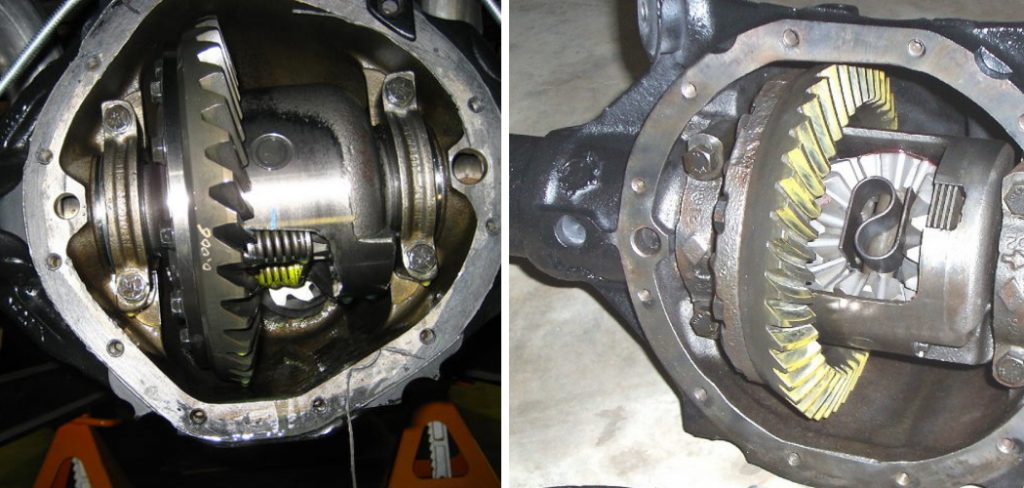
In this guide on how to tell if you have a posi rear end, we will walk you through the steps to determine if your car is equipped with a posi rear end, helping you to get the most out of your driving experience. It’s a simple yet crucial piece of knowledge for car enthusiasts and everyday drivers alike.
What is a Posi Rear End?
Before diving into how to tell if you have a posi rear end, it’s essential to understand what exactly this term refers to. A posi rear end is a type of differential that uses clutch plates, springs, and other components to evenly distribute power between the two wheels on an axle. This is in contrast to an open differential, where one wheel will receive more power than the other, depending on traction conditions.
Why Does it Matter?
Having a posi rear end can greatly improve your car’s performance in various situations. For example, when taking a sharp turn, having equal power distributed to both wheels can prevent the inside wheel from slipping and losing traction. This allows for better handling and control of your vehicle.
Additionally, in slippery road conditions such as snow or ice, a posi rear end can help maintain traction on both wheels, providing better overall stability and control of your car.
Things You’ll Need to Jack Up Your Car
To check if your car has a posi rear end, you will need to jack up your vehicle. Here are some things you’ll need for this task:
A Jack and Jack Stands:
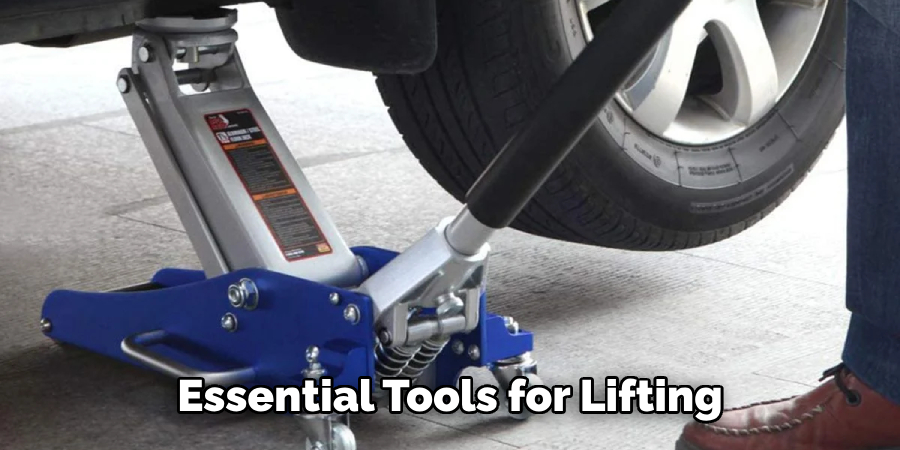
These are essential tools for lifting and supporting your car safely. Make sure to use them properly and on a level surface.
A Wheel Chock:
This will prevent your car from rolling while it’s lifted.
A Piece of Chalk or Paint Marker:
You’ll need this to mark the wheels for reference later on.
10 Simple Step-by-step Guidelines on How to Tell if You Have a Posi Rear End
Step 1: Visual Inspection
The first step is to inspect your car’s rear end visually. Look for any markings or labels that indicate a posi rear end, such as “Posi,” “Trak-Lok,” or “Limited-Slip.” It’s also worth noting the type of differential your car is equipped with, as this can give you a clue about whether it has a posi rear end or not.
The owner’s manual may also have this information. You can also check with a dealership if you’re unsure. The car’s VIN (Vehicle Identification Number) can also provide details about its differential. You can find the VIN on the driver’s side dashboard or door jamb.
Step 2: Jack Up the Car
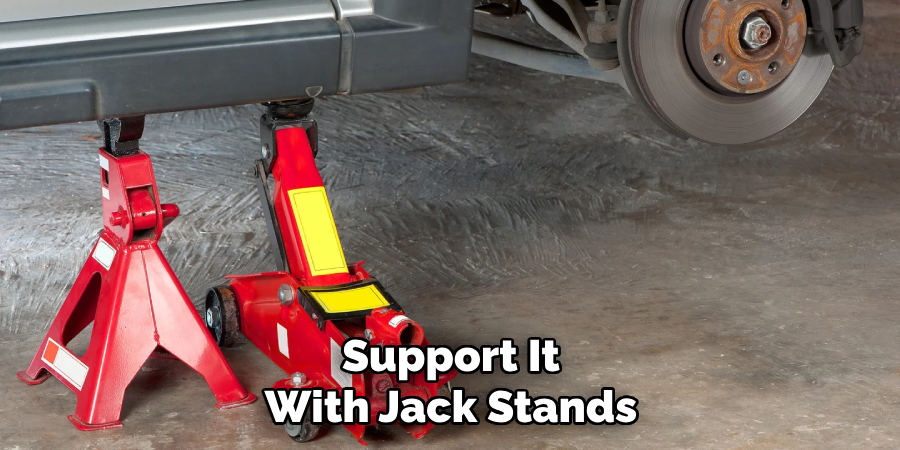
Using the jack, lift your car off the ground and support it with jack stands. Make sure to chock the wheels opposite of the one you are lifting for added safety. Otherwise, the car may roll while you are working on it. You’ll want to lift the rear wheels off the ground. It’s best to do this on a level surface.
But, in case that’s not possible, you can use a level to make sure the car is not leaning too much on one side. It’s important to take safety precautions when working in a car. The car should be stable and secure before proceeding with the next steps. It’s also recommended to have someone with you while performing this task. You can also use a creeper for better access and maneuverability under the car.
Step 3: Prepare the Wheels
The next step is to prepare the wheels for marking. You’ll want to mark the sidewalls of both rear tires with chalk or paint so that you know which tire is which when it’s time to turn the wheels. It’s best to mark the top of the tire so it’s easier to see when you turn it. Do this for both wheels.
The marking will be used as a reference point later on. You may want to clean the sidewalls beforehand for a clearer marking. It’s important to mark both tires, even if your car has a posi rear end. If you don’t have a posi rear end, the tires will turn in opposite directions.
Step 4: Turn One Wheel
Now it’s time to turn one wheel by hand. If you have a posi rear end, both wheels should rotate in the same direction at the same speed. This is because power is evenly distributed between both wheels through the limited-slip differential mechanism. If there’s any resistance or if the wheels turn in opposite directions, your car does not have a posi rear end.
You may want to turn the wheel a few times to be sure. The other wheel should also rotate while you’re turning one wheel. If it doesn’t, your car does not have a posi rear end. It’s also worth noting that some cars with posi rear ends may have a slight delay in power distribution, so don’t be alarmed if you notice this.
Step 5: Inspect the Traction
For this step, you’ll need to observe how much traction each tire has while turning the wheel. If there’s equal traction on both tires and they both spin at the same rate, your car likely has a posi rear end.
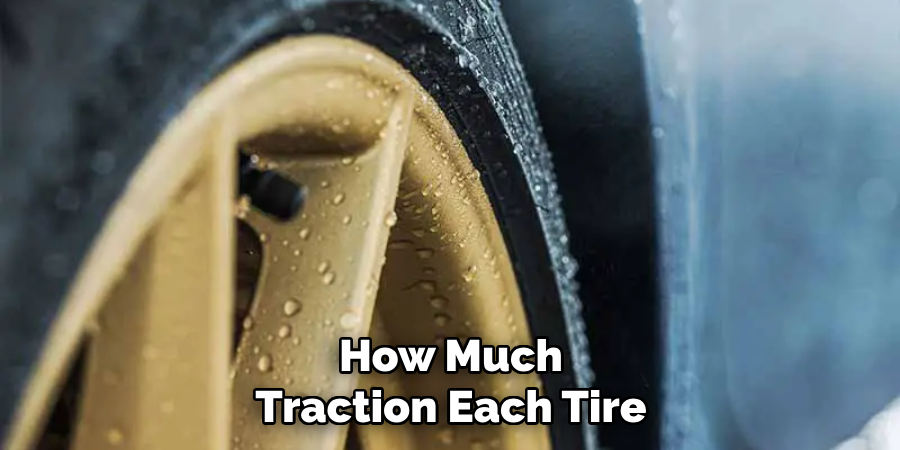
This is because power is being evenly distributed to both wheels, allowing for better traction on both tires. If one wheel has significantly more traction than the other or if only one wheel spins, your car does not have a posi rear end. The open differential mechanism allows one wheel to receive more power than the other. If you’re not sure, you can move on to the next steps for a more definitive test.
Step 6: Turn the Other Wheel
Now, it’s time to turn the other wheel by hand and observe its rotation. Similar to before, if your car has a posi rear end, both wheels should turn in the same direction at the same speed. If they don’t, your car does not have a posi rear end. If you’re still not sure, continue with the next steps.
But if both wheels have turned in the same direction at the same speed so far, it’s safe to assume that your car has a posi rear end. It’s always best to have someone with you while performing this task, just in case. You can never be too careful when working under a car. The person with you can also help observe the wheels while you’re turning them.
Step 7: Watch the Driveshaft

While turning one wheel, watch the driveshaft. If it spins, your car has a posi rear end. The driveshaft is connected to the transmission and turns when power is transmitted from the engine to the wheels.
In an open differential, the driveshaft would not turn if only one wheel was being turned. In a posi rear end, power is continuously distributed to both wheels, therefore causing the driveshaft to spin even when only one wheel is being turned. You can continue with the next steps to confirm your findings.
Step 8: Perform a Burnout Test
While we don’t recommend performing a burnout on your car, it’s an effective way to determine if your car has a posi rear end. Find a safe and legal location, preferably a drag strip or empty parking lot, and perform a burnout by spinning the tires.
A posi rear end will cause both wheels to spin at the same time and speed, creating thick black tire marks on the ground. In an open differential, only one wheel would spin, and the other would remain stationary. It’s important to perform this test safely and responsibly. Thoroughly inspect the markings on the ground afterward to confirm your findings.
Step 9: Consult a Professional
If you’re still unsure about whether your car has a posi rear end or not, it’s best to consult a professional mechanic or dealership. They can inspect your differential and confirm whether it is a limited-slip or open differential.
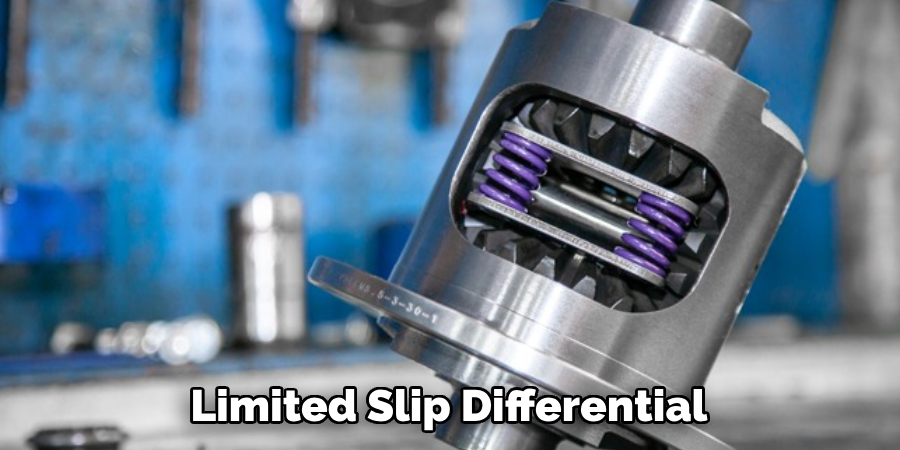
They can also provide information about your car’s specific make and model, as some cars may have a limited-slip differential but not necessarily a posi rear end. It’s always best to seek professional help if you’re unsure or unfamiliar with the process of inspecting differentials.
Step 10: Maintaining Your Posi Rear End
If your car does have a posi rear end, it’s important to properly maintain it for optimal performance. Regularly check and change the differential fluid according to your car’s maintenance schedule. This will ensure that the limited-slip mechanism continues to function properly. Avoid making sharp turns on dry pavement, as this can put unnecessary stress on the differential.
While it may be tempting, avoid performing burnouts or other excessive stunts that can also cause strain on the differential. It’s also a good idea to have your differential inspected by a professional if you notice any unusual noises or issues with your car’s handling.
Following these precautions on how to tell if you have a posi rear end and properly maintaining your posi rear end can help prolong its lifespan and keep your car running smoothly. Remember to always prioritize safety when working on or under a vehicle, and seek professional help if you’re unsure about any steps in the process. With proper care, your posi rear end can provide better traction and performance for years to come.
Mechanical Inspection
Beyond the hands-on test, there are other ways to determine if your car has a posi rear end. One method is through a mechanical inspection, where a professional mechanic or dealership can inspect and analyze certain parts of the differential to confirm its type. They may look for specific markings on the differential itself, such as “Limited-Slip” or “Posi,” to indicate the type of differential.
They may also use specialized tools, like a dial indicator or test kit, to measure the amount of resistance and torque within the differential. This can provide more accurate results than a hands-on test alone and can be helpful for older or modified cars where it may be difficult to determine the type of differential through visual inspection.
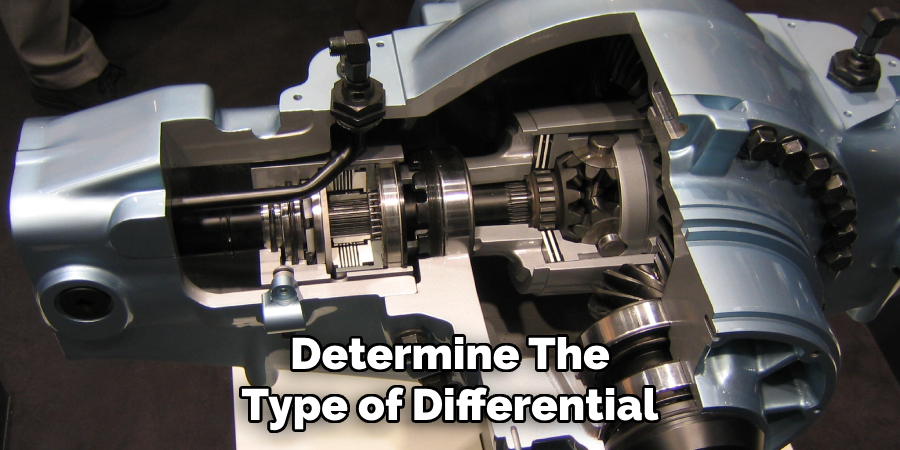
Regardless of the method used, it’s important to properly identify and maintain your car’s differential for optimal performance and safety on the road. Understanding how to tell if you have a posi rear end can also help you make informed decisions when it come to upgrading or modifying your car’s drivetrain.
Fluid Analysis and Maintenance Records
Fluid analysis and maintenance records should be kept for future reference when inspecting your posi rear end. This includes keeping track of the type of differential fluid used, as well as the dates of fluid changes.
Consistent and proper maintenance is crucial for ensuring optimal performance from your limited-slip differential mechanism. Regularly checking and changing the fluid can also help detect any potential issues early on, saving you from costly repairs down the road. Keeping detailed records can also help with troubleshooting and identifying any patterns or changes in your car’s performance.
Additionally, it’s important to use the recommended type of differential fluid for your specific make and model. Using the wrong type of fluid can cause damage to the limited-slip mechanism and affect your car’s overall performance. Consult your car’s manual or a professional mechanic for the appropriate type of fluid to use. Always replace the gasket or seal when changing the differential fluid to prevent leaks and contamination.
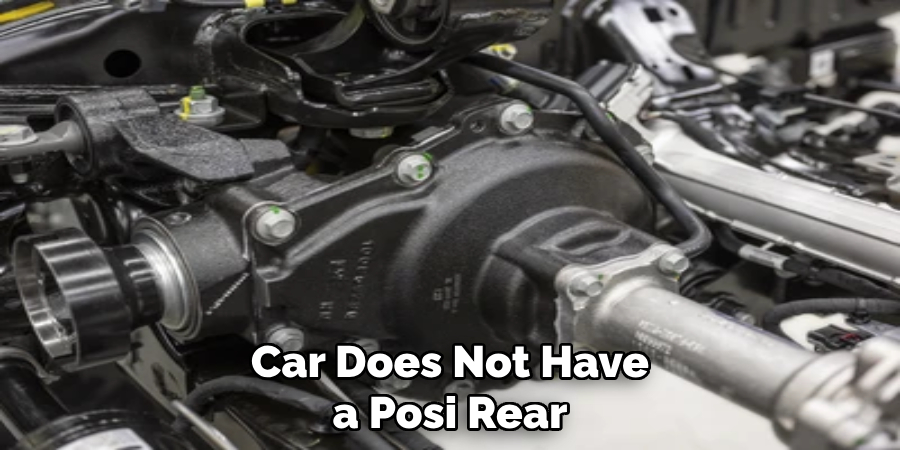
Aftermarket Identification Solutions
If you’ve determined that your car does not have a posi rear end, but you still want the added traction and performance benefits, there are aftermarket solutions available. One option is to install a limited-slip differential conversion kit. This typically involves replacing the entire differential with one that has a limited slip mechanism.
Another option is to install an aftermarket differential cover with built-in traction devices, such as clutch packs or gears. These solutions may require professional installation and can be costly, but they can provide the added benefits of a posi rear end for your car. The best method for your car will depend on its specific make and model, as well as your budget and intended use.
Frequently Asked Questions
Q: What is a Posi Rear End?
A: A posi rear end, also known as a positraction or limited-slip differential, is a type of differential that evenly distributes power to both wheels of a car for improved traction and handling. It is commonly found in high-performance or sports vehicles.
Q: How Can I Tell if My Car Has a Posi Rear End?
A: There are several steps you can take to determine if your car has a posi rear end, including visually inspecting the differential, turning one wheel at a time, and performing a burnout test. It’s also recommended that you consult a professional mechanic for confirmation.
Q: Is It Safe to Perform a Burnout Test on My Car?
A: While performing a burnout can help determine if your car has a posi rear end, it is not recommended due to the potential safety hazards and strain it can put on your vehicle’s differential. It’s best to find a safe and legal location, such as a drag strip, to perform the test if necessary. Remember to always prioritize safety and responsible driving behavior when operating a vehicle.
Q: How Can I Maintain My Posi Rear End?
A: To properly maintain your posi rear end, regularly check and change the differential fluid according to your car’s maintenance schedule. Avoid making sharp turns on dry pavement and performing burnouts or excessive stunts that can strain the differential. If you notice any unusual noises or issues with your car’s handling, have your differential inspected by a professional. Always follow safety precautions and seek professional help when necessary while working on or under a vehicle.
Conclusion
In conclusion, on how to tell if you have a posi rear end, the presence of a posi rear end in your vehicle can drastically improve handling and traction, particularly in adverse driving conditions.
To determine if your car is equipped with this feature, you can perform a simple test involving tire spin, consult your vehicle’s documentation, examine the differential case, or look for a tag or stamping on the axle. For a definitive answer, inspecting the internal gears is suggested. Whether you’re an automotive enthusiast or simply seeking to understand your vehicle better, identifying a posi rear end is an essential bit of knowledge that can enhance your driving experience.

About
JeepFixes Team is a skilled author for Jeep Fixes, bringing 6 years of expertise in crafting a wide range of jeep fixes. With a strong background in jeep fixes work, JeepFixes Team’s knowledge spans various types of fixtures, from decorative pieces to functional hardware, blending precision with creativity. His passion for jeep fixes and design has made him a trusted resource in the industry.
Professional Focus:
Expert in Jeep Fixes : JeepFixes Team aesthetic specializes in creating durable and innovative jeep fixes, offering both appeal and functionality. His work reflects a deep understanding of jeep fixes techniques and materials.
Sustainability Advocate : He is dedicated to using sustainable practices, ensuring that every fixture is crafted with eco-friendly methods while maintaining high-quality standards.
In his writing for jeep fixes, JeepFixes Team provides valuable insights into the latest trends, techniques, and practical advice for those passionate about jeep fixes, whether they are professionals or DIY enthusiasts. His focus on combining artistry with engineering helps others discover the true potential of jeep in design.
